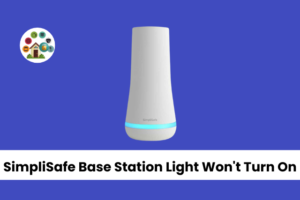Contents
- 1 Introduction
- 2 1. The era of wearable technology equals health and fitness
- 3 2. Fitness trackers: help in achieving fitness goals
- 4 3. Smart watches and health monitoring
- 5 4. Sleep tracking or health improvement
- 6 5. Heart rate monitoring or fitness
- 7 6. GPS tracking or outdoor activities
- 8 7. Health Data Integration and Personalization
- 9 8. Challenges in Wearable Technology
- 10 9. Future trends in wearable technology
- 11 10. Wearable tech and chronic disease management
- 12 11. Integrating wearable tech into fitness routines
- 13 12. The impact of wearable tech on mental health
- 14 13. Wearable tech in sports and athletics
- 15 14. Wearable tech for senior health monitoring
- 16 15. Conclusion
Introduction
Tech is Transforming Health and Fitness In today’s fast-changing world, wearable technology has become a new revolution in the health and fitness arena. This technology is not only improving our fitness tracking, but also transforming aspects of our health.
In this article, we’ll look at how wearable tech, such as smartwatches, fitness trackers, and other innovative devices, are changing the health and fitness industry. We’ll also look at the technology’s benefits, challenges, and upcoming trends.
1. The era of wearable technology equals health and fitness

The impact of wearable technology on health and fitness has never been greater. Smartwatches and fitness trackers are modern day gadgets that monitor our daily activity, track heart rate, and analyze sleep patterns.
These devices provide real-time data that helps achieve individual health goals as everything happens. What is technology?
2. Fitness trackers: help in achieving fitness goals
Fitness trackers, such as Jessie’s Fitbit and Garmin, are critical to achieving fitness goals. These trackers monitor step count, calories burned, and heart rate, helping individuals track their daily fitness goals.
With the help of the devices, users can monitor their activity levels on a daily basis, providing them with motivational and guiding feedback.
3. Smart watches and health monitoring
Smartwatches have taken health monitoring to a new level. Smart watches like the Apple Watch and Samsung Galaxy Watch can monitor heart rate variability, ECG readings, and even blood oxygen levels.
They help detect health conditions and indicate the need for timely medical attention. Smartwatches are also useful for real-time data analytics, doctors and healthcare professionals.
4. Sleep tracking or health improvement
Sleep tracking is another important feature available for wearable technology. Devices, such as our Ring and Whoop, monitor sleep patterns and provide the user with detailed insight into sleep quality.
This is valuable for improving physical health, as it is essential for good health and well-being. With accurate sleep data, users can improve their sleep habits.
5. Heart rate monitoring or fitness
Heart rate monitoring technology has become quite advanced, making fitness tracking accurate. Wearable devices continuously track heart rate and provide data even during intense exercise and recovery periods.
Accurate heart rate monitoring helps users understand their fitness level and design appropriate workouts. This data is helpful in achieving fitness goals and improving health.
6. GPS tracking or outdoor activities

The GPS tracking feature is a nice piece of wearable technology. Running and cycling enthusiasts wear GPS-enabled devices that track routes, distance, and speed.
These make outdoor activities more enjoyable and productive, as users can accurately monitor their performance and progress. With GPS tracking, it is easy to analyze routes and plan future workouts.
7. Health Data Integration and Personalization
Wearable technology is also improving health data integration and personalization. Devices, such as Apple Health and Google Fit, aggregate data and provide personalized recommendations.
This integration helps users achieve their health and fitness goals, and provides tailored workout plans and diet recommendations for detailed insights.
8. Challenges in Wearable Technology
While there are numerous advantages to wearable technology, there are also some difficulties. Concerns regarding data privacy and security present a significant obstacle; it is essential to safeguard sensitive health information.
Wearable devices are constantly updated and maintained, ensuring accuracy and reliability. Addressing these challenges is critical to the future development of the technology.
9. Future trends in wearable technology
Wearable technology is interesting for future trends. Advanced sensors, artificial intelligence, and machine learning will help make wearable devices even smarter and more accurate.
Future devices will make health monitoring even more sophisticated, and detect potential health problems at an early stage through predictive analytics. Trends predict more innovations in the health and fitness industry.
10. Wearable tech and chronic disease management
Wearable technology is also playing an important role in the management of chronic diseases. Devices, such as glucose monitors and blood pressure trackers, monitor conditions such as diabetes and high blood pressure.
With real-time data and alerts, patients can effectively manage their health conditions. The potential of wearable tech to make chronic disease management accessible and effective.
11. Integrating wearable tech into fitness routines
Integrating wearable technology into fitness routines is easy and rewarding. Users can track their daily workouts, analyze performance metrics, and get personalized feedback.
This integration makes achieving fitness goals easy and enjoyable. With wearable devices, it is possible to customize exercise plans and monitor progress.
12. The impact of wearable tech on mental health
Wearable technology is also having an impact on mental health. Stress monitoring and mood tracking features, such as KWHOOP and Music, help users track their mental well-being.
Real-time feedback and stress management techniques can be used to improve mental health. Through wearable tech, mental health issues can be proactively managed.
13. Wearable tech in sports and athletics

Wearable technology is being used to improve performance in sports and athletics. Professional athletes and coaches are using advanced wearable devices for performance measurement, injury prevention, and recovery tracking.
This technology makes sports training more efficient and scientific, and improves the performance of athletes.
14. Wearable tech for senior health monitoring
Wearable technology makes health monitoring easy and accessible for senior citizens. The devices, Jesse’s Fall Detector and Health Monitor, track the health and safety of seniors.
This technology helps in detecting emergency situations and providing timely assistance. For seniors, these devices enhance their quality of life and help maintain independence.
15. Conclusion
Tech is Transforming Health and Fitness Wearable technology is revolutionizing the field of health and fitness. These devices not only simplify and accurately monitor health and fitness, but also provide highly personalized insights and real-time data.
In the future, advancements in wearable tech will further evolve the health and fitness industry. Through technology, individuals can more effectively achieve their health and fitness goals, and enhance overall well-being.





